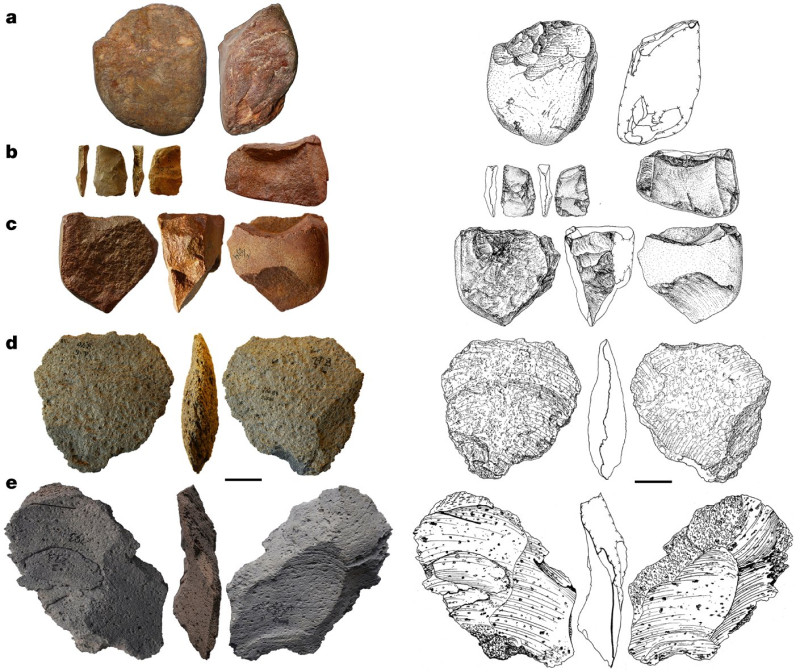The researchers estimate that this is the earliest evidence of any type of human in Europe that has been dated
Ancient stone tools found in western Ukraine may be the earliest known evidence of early human presence in Europe, according to research published Wednesday in the journal Nature.
According to the Associated Press, the ancient chipped stones, intentionally made of volcanic rockwere excavated from a quarry in Korolevo in the 1970s. Archaeologists used new methods to date the layers of sedimentary rock surrounding the tools to over 1 million years old.
“This is the earliest evidence for any type of human in Europe that has been dated,” said Mands Faurschu Knudsen, a geophysicist at Aarhus University in Denmark and co-author of the new study.
He said it is not certain which ancestors of early humans made the tools, but it may have been the homo erectus, the first species to walk upright and master the use of fire.
“We don’t have fossils, so we can’t be sure,” said Roman Garba, an archaeologist at the Czech Academy of Sciences and co-author.
The chipped stone tools were likely used for cutting meat and perhaps scraping animal hides, he said.
Researchers estimate that the tools may be as old as 1.4 million years, but other experts say the study’s methodology suggests they may be just over 1 million years old, putting them roughly in the same date range as other ancient tools discovered in Spain.
The earliest stone tools of this type were found in east Africa and date back 2.8 million years, said Rick Potts, who directs the Smithsonian Institution’s Human Origins Program.
The Ukraine site is significant because “it is the earliest site this far north,” suggesting that the first people who dispersed from Africa with these tools were able to survive in different environments.
“The earliest people with this old stone tool technology were able to colonize everywhere from warm Iberia, Spain to Ukraine, where it’s very cold seasonally, and that demonstrates an amazing level of adaptability,” Potts said.
Source :Skai
I am Frederick Tuttle, who works in 247 News Agency as an author and mostly cover entertainment news. I have worked in this industry for 10 years and have gained a lot of experience. I am a very hard worker and always strive to get the best out of my work. I am also very passionate about my work and always try to keep up with the latest news and trends.











